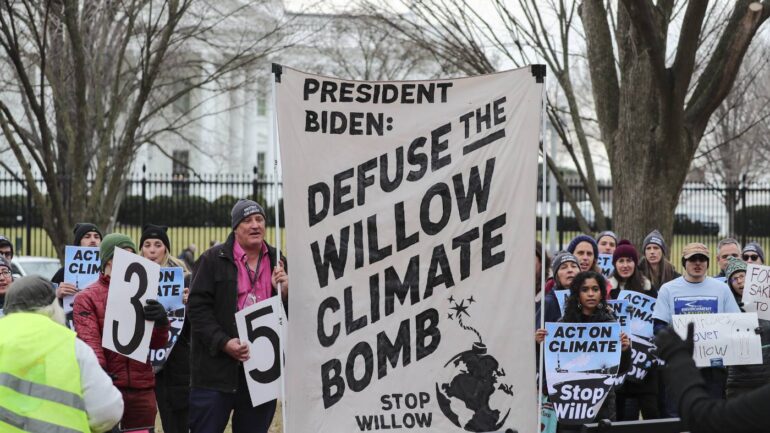On March 13, Joe Biden approved ConocoPhillips’ Willow oil and gas project in Alaska, the biggest oil drilling project in the US for decades.
During his election campaign, Mr Biden vowed to end oil and gas drilling, but his administration now officially greenlit the $8 billion project.
Climate activists are outraged, with over one-million letters being sent to the White House, 4.7 million petition signatures, and a trending #StopWillow TikTok hashtag.
So, what is the Willow Project? When will the drilling begin? Should we be worried about its impact on our climate?
Click the link below and listen the full episode now:
On today’s Briefing, we speak to Ian Dooley, a lawyer from Earthjustice, the group trying to sue against the Willow project.
Mr Dooley said the project was approved by Biden’s administration, and it was inconsistent with the commitment the administration made previously to tackle climate change.
During Mr Biden’s presidential campaign, he said, “no more drilling on federal land, no more drilling including offshore, no ability for the oil industry to continue to drill.”
However, the Willow project aims to construct and operate up to five drill pads for a total of 250 oil wells.
This project is built by ConocoPhillips, a company that performed the project as the next great hub for future infrastructure in the Western Arctic. If you are not familiar with the Western Arctic, it is a 28 million acres area about the size of the state of Indiana,”
Mr Dooley said.
According to the Earthjustice organisation, The US ranks as the second-largest emitter of climate pollution on the planet. And the government’s Willow project is only the beginning of ConocoPhillips’ sprawling plans for Alaska’s Western Arctic.
The Willow project will be the furthest west intrusion of this area and will unlock infostructure potential and investment potential to the oil and gas industry for decades to come.”
Download the free LiSTNR app for more episodes of The Briefing.
